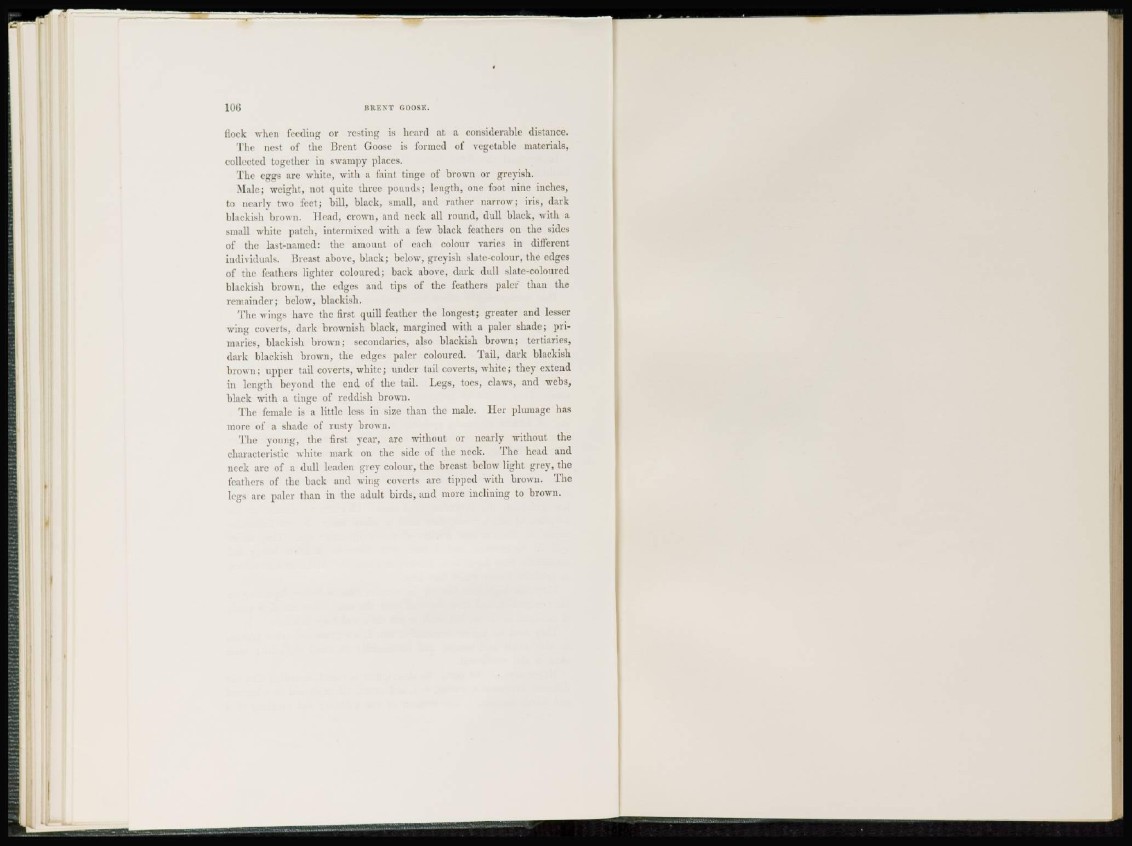
flock when feeding or resting is heard at a considerable distance.
The nest of the Brent Goose is formed of vegetable materials,
collected together in swampy places.
The eggs are white, with a taint tinge of brown or greyish.
Male; weight, not quite three pounds; length, one foot nine inches,
to nearly two feet; bill, black, small, and rather narrow; iris, dark
blackish brown. Head, crown, and neck all round, dull black, with a
small white patch, intermixed with a few black feathers on the sides
of the last-named: the amount of each colour varies in different
individuals. Breast above, black; below, greyish slate-colour, the edges
of the feathers lighter coloured; back above, dark dtdl slate-coloured
blackish brown, the edges and tips of the feathers paler than the
remainder; below, blackish.
The wings have the first quill feather the longest; greater and lesser
wing coverts, dark brownish black, margined with a paler shade; primaries,
blackish brown; secondaries, also blackish brown; tertiaries,
dark blackish brown, the edges paler coloured. Tail, dark blackish
brown; upper tail coverts, white; under tail coverts, white; they extend
in length beyond the end of the tail. Legs, toes, claws, and webs,
black with a tinge of reddish brown.
The female is a little less in size than the male. Her plumage has
more of a shade of rusty brown.
Tin' young, the first year, are without or nearly without the
characteristic white mark on the side of the neck. The head and
neck arc of a dull leaden grey colour, the breast below light grey, the
feathers of the back and wing coverts are tipped with brown. The
legs are paler than in the adult birds, and more inclining to brown.